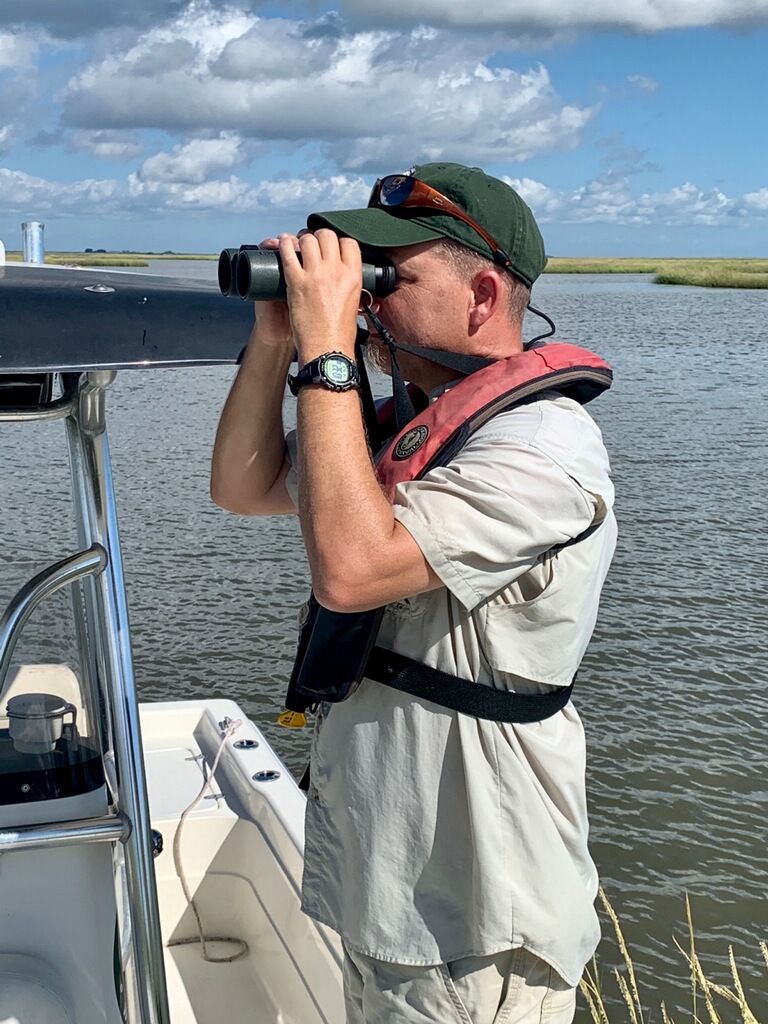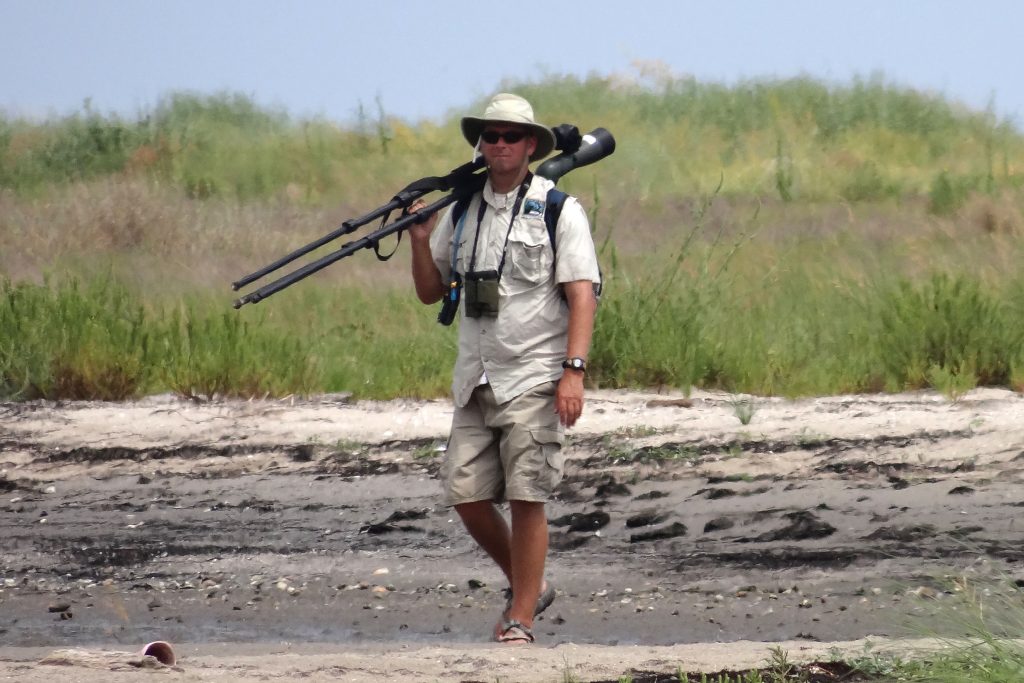
What is your job, what do you work on, and what is your involvement with GoMAMN?
I am the nongame ornithologist for the Louisiana Department of Wildlife and Fisheries, where I work on a diverse array of projects, many of which involve monitoring to identify research needs and inform conservation actions to benefit Louisiana’s bird species of greatest conservation need.
Responsibilities that take up most of my time include coordinating the state’s coastal array of VHF passive detection stations to track bird (and potentially other wildlife) movement, providing technical input to a number of working groups, offering guidance to public and private interests on a range of issues that vary daily (e.g., from general bird questions to permitting concerns), and monitoring birds in the field. I’m also involved with education and outreach to a degree and am able to interact with the birding community a fair bit, including for really fun stuff like coordinating Christmas Bird Counts and Breeding Bird Surveys.
I became involved in GoMAMN at the 2015 Spanish Fort meeting during the (relatively) early development of the Strategic Bird Monitoring Guidelines. I later contributed to the Landbird chapter as a coauthor, and am now engaged as a Coordination Committee member.

Tell us about yourself.
I grew up in south Louisiana and spent a lot of time outside with my dad, who was often pointing out and identifying birds as we fished the backwaters of the Atchafalaya Basin swamp. As a 12-year old I vividly remember seeing a male Hooded Warbler in my backyard one spring morning. Many other events would shape my trajectory, but few would make a more influential impression. I was fortunate to be involved in a number of exceptional research projects, including spending two and a half years working on birds in the Neotropics, and learned from an influential cast of mentors throughout my undergraduate and graduate school years. My first “real” job involved identifying factors limiting reproduction of desert riparian birds in southern Utah, and utilizing that information to inform and implement riparian forest restoration activities. In 2013 I returned to Louisiana when I followed an opportunity to work on the Natural Resource Damage Assessment for birds following the Deepwater Horizon oil spill. (My wife will attest that we were taking a chance by leaving our perfect jobs in Utah, after starting a family, for a temporary job in Louisiana.) I’m an unapologetic, lifelong birder. I’m deeply interested in understanding the status and distribution of birds in Louisiana, and have been a member of the Louisiana Bird Records Committee since 2015. When not hanging out with my wife and two boys, I spend my free time birding my favorite places, exhaustively documenting the birds by photo and audio recording, and exploring under-birded places of Louisiana.
Besides a coordinated and integrated monitoring program, what do you see as another essential need for furthering avian management in the Gulf of Mexico?
I would say that taking advantage of the unprecedented Gulf restoration opportunities, stemming from the Deepwater Horizon oil spill settlement, to maximize habitat benefits for birds is essential. In addition to implementing successful projects designed to benefit birds using allocated bird dollars, theoretically, there exist opportunities to incorporate specific bird habitat features into habitat restoration more generally, thereby benefiting birds at a much larger scale. For example, creating tools by which avian ecologists, restoration engineers, and construction contractors communicate in a common language may provide the capacity to incorporate bird-friendly features into restoration projects funded under different restoration goals, for non-bird restoration types, and at minimal additional cost.
Where is your favorite outdoor place on the Gulf Coast?
I’m particularly fond of Louisiana’s Isles Dernieres barrier islands, which have a very, very high bird-to-human ratio.
If you could befriend 3 famous people (living or dead), who would they be?
I don’t know about “befriend,” but I’d love to have a beverage or two with John Steinbeck, Alfred Russel Wallace, and George Harrison (favorite author, naturalist, and Beatle).
You’re a major league baseball player. What song do they play to rev up the crowd when you come up to bat?
“Rev” might be the wrong word, but the sitar intro of Norwegian Wood (This Bird Has Flown).
Any other little-known fact about you that you’d like to tell us?
My wife, who is from Michigan, and I met in a hotel lobby in Santa Cruz, Bolivia.
What is one thing you know for sure?
The Louisiana coastline is going to look very different to my 5- and 8-year old boys when they are my age.
